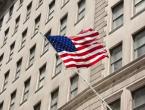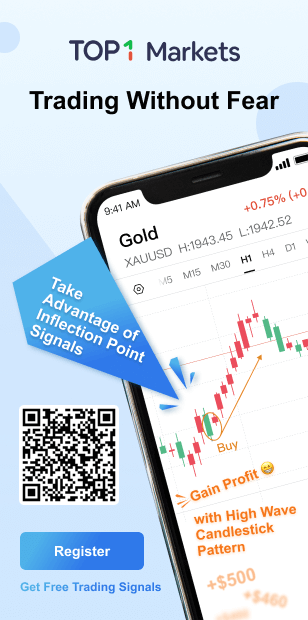Gold trading reminder: Half of Wall Street analysts are optimistic about the price of gold! The bulls are going to fight back this week?
On Monday (October 4) Asian session, spot gold rose slightly, trading near 1763. Last Friday (October 1), the price of gold closed slightly higher because the weaker US dollar index overwhelmed the market's bet on interest rate hikes. In addition, high inflation data and concerns about economic growth risks have also increased the charm of gold.
During the day, we will focus on the final value of US durable goods orders in August and the data of factory orders in August.
Fundamentals are bullish
[U.S. August PCE inflation rate reached the highest since 1991]
The growth rate of personal spending in the United States in August was higher than expected, driven by commodity purchases. At the same time, a closely watched inflation indicator exceeded market expectations.
Data released by the Ministry of Commerce on Friday showed that personal purchases of goods and services increased by 0.8% month-on-month, and fell by 0.1% after the revision in July.
The Personal Consumption Expenditure (PCE) price index-an indicator used by the Fed to assess its inflation target- rose 0.4% month-on-month and 4.3% year-on-year. This is the biggest increase since 1991.
These data show that despite the increase in new crown cases, consumer demand in August remained strong . The increase in expenditure is due to the substantial increase in commodity spending-especially food and household goods-which may reflect the increased fear of the epidemic and people avoiding eating out and traveling.
According to the median estimate of survey economists, personal spending is expected to increase by 0.7% from the previous month, and the PCE price index is expected to increase by 0.3%.
Since the beginning of this year, supply has been struggling to keep up with the rapidly recovering demand, leading to rising prices and eroding Americans’ purchasing power.
The core PCE price index, which excludes food and energy, rose 0.3% for the second consecutive month. The index rose 3.6% year-on-year, consistent with its highest level since 1991.
[The U.S. dollar fell for the second day in a row]
The U.S. dollar fell for the second consecutive trading day on Friday, following the decline in U.S. Treasury yields, as investors took profits after the recent surge, but the decline was considered temporary.
(Daily chart of the US dollar index)
Concerns about the new crown epidemic, unstable economic growth, and the deadlock in Washington before the deadline to raise the US government’s borrowing ceiling have led to cautious market sentiment, which has also provided support for the US dollar, which is regarded as a safe-haven asset, and combated the decline in gold prices.
Marc Chandler, chief market strategist at Bannockburn Global Forex, said: "The more hawkish stance seems to be the key factor that pushed the dollar higher at the end of September."
He added: "However, the current focus is on fiscal policy, although investors seem to have seen it through, because many people think that US debt default is unthinkable."
Fundamentals are bad
[US manufacturing growth unexpectedly rose to a four-month high in September]
Due to strong demand for industrial products and rising inventories, an index measuring US manufacturing activity recorded the fastest growth rate in four months in September .
According to data released on Friday, the Institute of Supply Management (ISM) September manufacturing index rose to 61.1 from 59.9 in August. The index higher than 50 represents activity expansion. Economists surveyed estimated the median value of 59.5.
The data shows that manufacturers have made progress in their efforts to digest the backlog of orders, but the shipping challenges have not yet been eliminated, and there are still delays in delivery. However, strong consumer demand and business investment should continue to support the continued growth of the manufacturing industry in the coming months .
A measure of the growth of backlog orders fell to its lowest level in three months, while the ISM new orders index remained at a solid level of 66.7. Production growth has slowed slightly, but factory inventory indicators set the fastest growth rate since October 2010.
At the same time, the transportation of raw materials and finished products is still a major issue facing manufacturers. The port backlog has reached a record high, freight companies and railways are facing bottlenecks, and the cost of shipping containers has soared. The ISM supplier delivery index rose to a three-month high, and the ISM input price index also rose.
[U.S. consumer confidence rose slightly at the end of September]
The US consumer confidence index rose slightly at the end of September, but it was still close to the low point since the outbreak, and Americans' optimism about the economic situation has slightly increased.
Data released on Friday showed that the University of Michigan consumer confidence index rose to 72.8 from an initial value of 71, exceeding the median expected by survey economists, which was 70.3 in August .
Richard Curtin, who is in charge of the investigation, said in a statement, “Consumer confidence rose slightly at the end of September, but overall optimism was still suppressed, initially affected by the spread of the delta strain, and later due to the soaring inflation rate and poor long-term economic prospects. ".
The slight rebound in consumer confidence suggests that as new cases in most states decline, worries about Delta are beginning to weaken. Although high prices and continued health concerns still weigh on consumer confidence, overall consumer spending remains high.
A report from the University of Michigan showed that due to high prices, the purchasing conditions for housing, automobiles and durable goods have deteriorated compared with August, but the purchasing prosperity of durable goods has improved from the beginning of last month.
Consumers expect the inflation rate to be 4.6% in the next year and 3% in the next five years, higher than the 2.9% forecast in August.
According to the survey conducted from August 25 to September 27, the current situation indicator rose to 80.1 from the initial 77.1, and the future expected indicator rose to 68.1.
Respondents believe that the current financial situation is more favorable than August. For the next five years, only 44% of respondents expect their financial situation to improve, which is the lowest rate in seven years.
[US stocks closed sharply higher]
The US stock market closed sharply higher on Friday. On the first trading day of the last quarter of 2021, buying interest was boosted due to optimistic economic data, the fight against the new crown epidemic and Washington's progress in passing the infrastructure bill.
The three major U.S. stock indexes fluctuated earlier, but began to rise in the late afternoon, driven by economically sensitive cyclical stocks.
After the White House announced that U.S. President Biden would participate more in the negotiation of the infrastructure spending bill being discussed in the U.S. Congress, the stock market gained momentum.
David Carter, chief investment officer of Lenox Wealth Advisors in New York, said: "There is a general rebound today, and the market is not bound by new taxes or reduced debt purchases."
"Compared to the past few weeks, there is no major news in Washington, so the market is forced to pay attention to positive economic data and a new new crown treatment drug."
The Dow rose 1.43%, the S&P 500 rose 1.15%, and the Nasdaq rose 0.82%.
(Dow daily chart)
[Philadelphia Federal Reserve Chairman: "Rapid" reduction will leave policy space for the Fed]
Philadelphia Federal Reserve Chairman Hack said, "I worry that inflation will not be as short-lived as we thought."
" I think the inflation rate will start to fall , but the supply chain constraints are indeed very serious."
"As a result, the inflation rate may rise even higher. That's why I always hope to start reducing asset purchases as soon as possible."
" I am very satisfied with the start of the code reduction in November , and it will be implemented soon, and the asset acquisition activities may be completely terminated next summer."
"This can leave us some policy space."
This week's trend forecast
Gold rebounded from a two-month low last week, which created some optimism in the market, with retail investors and Wall Street analysts expecting prices to rise this week.
Although bullish sentiment in the market has increased recently, some analysts pointed out that the market is still facing fundamental resistance such as rising interest rates, rising U.S. dollars, and general indifference from investors.
Christopher Vecchio, senior market strategist at DailyFX, said that the Evergrande issue and the US debt ceiling issue may continue to support prices in the short term. Fitch Ratings said on Friday that if federal lawmakers do not resolve the debt ceiling issue in a timely manner, the US’s AAA sovereign credit rating may be under pressure.
Despite the growing uncertainty, Vecchio said that he hopes these issues will eventually be resolved.
This week, 14 Wall Street analysts participated in Kitco News's gold survey. Among the participants, 7 people (50%) believe that the price of gold has risen. At the same time, four analysts (29%) believe that the price of gold has fallen this week, and three analysts (21%) are neutral on gold.
At the same time, online polls received a total of 889 votes. Among them, 430 respondents (48%) believe that the price of gold will rise this week. Another 340 people or 38% said it would fall, while 119 people or 13% of voters were neutral.
Compared with last week when market analysts were clearly bullish, market sentiment has changed dramatically. At the same time, the bullish sentiment of retail investors has rebounded from a seven-month low.
Marc Chandler, managing director of Bannockburn Global Forex, said that in the near future, the price of gold has room to rise to a high of $1,787 per ounce. However, he pointed out that market sentiment remains poor.
Although some analysts are conditionally optimistic about gold, others believe that its potential is growing, especially as European energy prices continue to rise out of control. According to reports, European natural gas prices have risen to a record high this year.
Ole Hansen, Head of Commodity Strategy at Saxo Bank, said: “As inflation becomes no longer short-lived, gold is slowly breaking away from the US dollar and yields are strengthening.”
In general, if the price of gold can break through the upper trend line in the day, the downward trend is expected to change, and the gold price may usher in further rises.
(Spot gold daily chart)
GMT+8 8:24, spot gold was quoted at US$1,764.73 per ounce.











